A big future for Kaurina Kulfi
Dallas-based company continues to see growth in Indian frozen novelty product.

Manufacturing kulfi is a lengthy process, but it yields a flavorful, low-calorie dessert.
Photos courtesy of Kaurina's Kulfi.
For Dallas-based Kaurina’s Kulfi, winner of the 2012 Dairy Foods’ Product of the Year award, the manufacturing process of its frozen novelty pops and pints involves one significant change compared to traditional ice cream processors: the cooking process with the milk.
Kulfi is a unique frozen novelty treat whose history dates back to 1700s India. Manufacturing it involves a lengthy process, but it results in a flavorful dessert that meets the demands of dieters with its low-calorie, low-sugar, and gluten-free profile.
“We had to completely innovate the cooking process from scratch. What we do with a stove is difficult to replicate with existing technologies we have in terms of pasteurization and processing of milk,” says Aman Singh, CEO of Kaurina’s Kulfi, who co-founded the business along with father, Hari Singh, in 2004. “Being the product is made from caramelized half-and-half milk, we have to make it the old-fashioned way. We cannot speed up the process with methods like HTST (high temperature short time) or UHT (ultra-high temperature), because what happens is the evaporation component does not exist. It is all through closed-piping systems.”
The milk, obtained from local dairy cooperatives in Kaurina Kulfi’s receiving bay at its headquarters in Dallas’ Farmers Branch neighborhood, must be cooked for long times and sustained temperatures, as opposed to traditional products, which can be heated up at high temperatures to kill bacteria and quickly cooled.
“We basically cook the milk for a full day. We slow cook and evaporate it naturally to a consistency we deem proper for our kulfi. At that point, it is caramelized and thickened to the right point,” Amin Singh reveals. “It is a mix of science and art.”
The science of making kulfi is not exact. The process can either be slower or faster than expected, so the Kaurina’s Kulfi operator must be well-trained to know the exact color and aroma it should have.
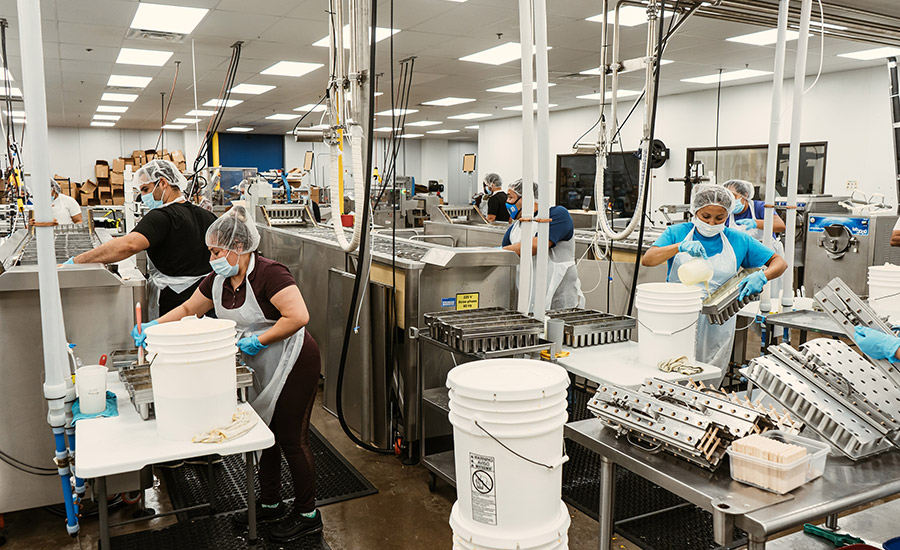
“That’s when they will know we are ready for step two and step three,” Aman Signh explains. “It is not easy to make kulfi. And it can be an expensive process. During the one day we cook the milk and make the initial base, other companies can make truckloads of finished product.”
As Kaurina’s Kulfi grows, it may be able to automate some of the process required to produce the base for a kulfi product. But Aman Singh stresses the process will always require a human eye to determine if the mix is ready or not.
“Also, unlike some other brands, we are our own manufacturer,” he maintains.
Next steps
After the base is deemed ready, the next step is to transfer it into mixing tanks when Kaurina’s Kulfi infuses Alphonso mango pulp for its Mango flavor; real nuts for its Pistachio Almond flavor; strawberry fruit for its Strawberry flavor; infused ground cardamom for its Malai flavor; and cocoa for its Chocolate flavor.
“For our chocolate flavor, it is a different process as we put cocoa into the milk base while it is being cooked. On those days, the whole plant smells like hot cocoa,” Aman Singh jokes.
All of the ingredients are then poured into molds and frozen and the rest of the process is pretty “straightforward,” Aman Singh notes. “We extract the pops from the molds, wrap it, package it out, palletize it, and you are good to go,” he says.
Kaurina’s Kulfi currently has the capacity to produce some 100,000 kulfi pops per week in its 30,000-square-foot-plant, but could easily go up to 150,000 pops per week if requested by any of the retailers carrying its products, which includes Costco, Whole Foods, H-E-B, and others.
“And that is only how much we can expand our production in one shift. If we added another shift, we could probably produce another 50,000 pops per week. And if we added a weekend shift, it would be even more, so we could produce up to 200,000 to 300,000 pops per week with our current equipment,” Aman Singh states.
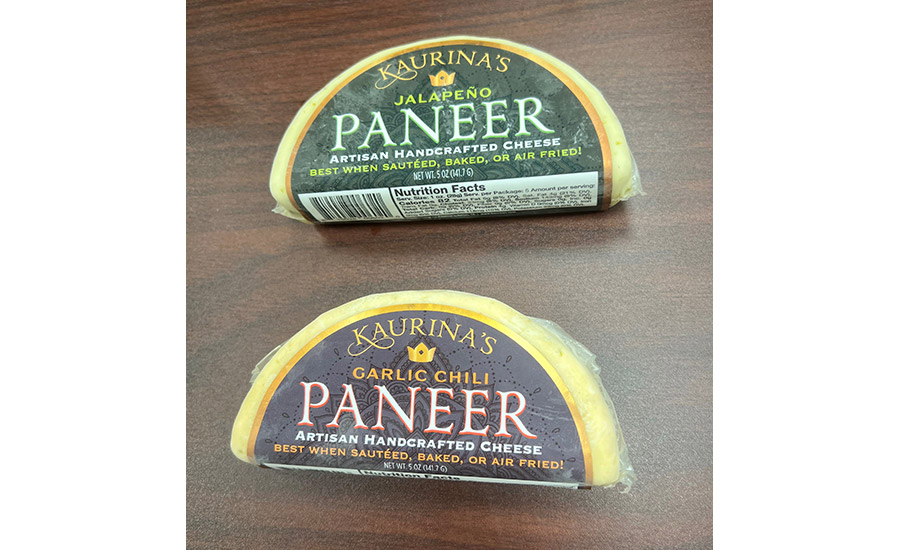
This ability to ramp up production was evident during Dairy Foods’ trip to the Kaurina’s Kulfi plant. There is plenty of unutilized space that is ready when needed. Attention to detail is also clear when visiting Karina Kulfi’s headquarters. Plenty of thought was placed into every nook and cranny of the location, and this attention to detail is evident in the final product. Even the popsicle stick is a work of art, featuring an Indian design and a Kaurina’s Kulfi logo.
This detailed work is the result of Kaurina’s aforementioned one eight-hour shift, which employs six to 25 people based upon retailer demand. In addition to those employees in the plant, the company also has an administrative staff of about six people, including Aman and Hari Singh.
“We often have about 15 people here working full-time. We bring on additional seasonal staff,” Aman Singh says. “The number was much higher during the pandemic [when business was really booming].”
Optimism abounds
Speaking of the pandemic, although Kaurina’s Kulfi’s sales — like most every other frozen novelty brand — have leveled off since COVID-19, that period introduced tons of new people to the frozen treat. The company has parlayed that consumer awareness into future growth.
“We still have very strong sales. The pandemic also gave us opportunities for us to be sold at new retailers,” Aman Singh relays. “More retailers are receptive to what we are doing. We have had a lot of meetings with retailers [in 2024]. “We think 2025 will be a breakthrough year for us and we will be on a lot more shelves.”
The kulfi mini-pops often sell at a suggested retail price of $5.99 for a box of four. Pints are often sold for $6.99. Therefore, Kaurina’s Kulfi is considered more of a premium brand, due largely in part to its lengthy manufacturing process.
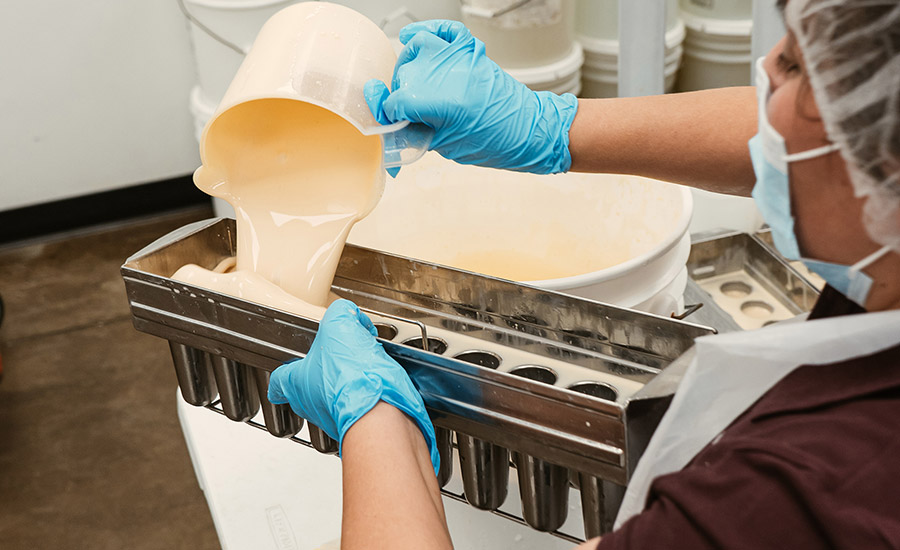
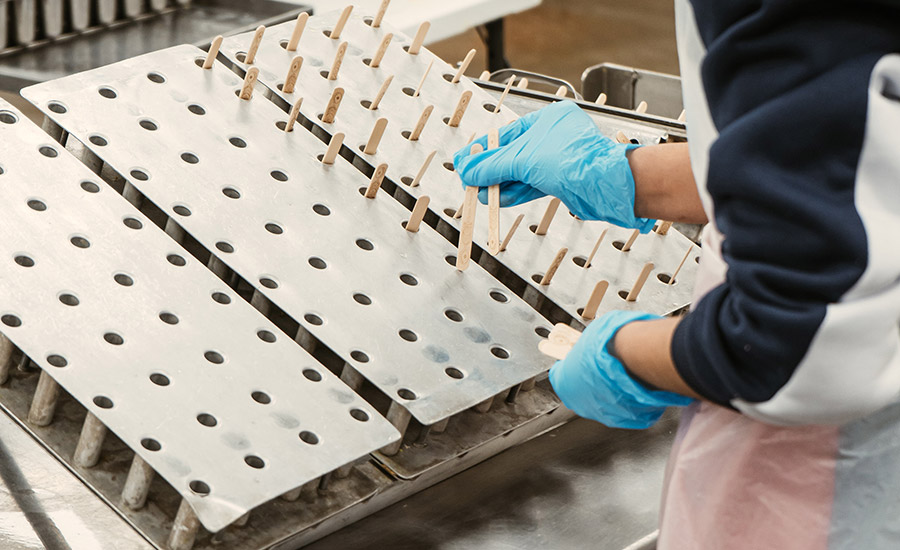
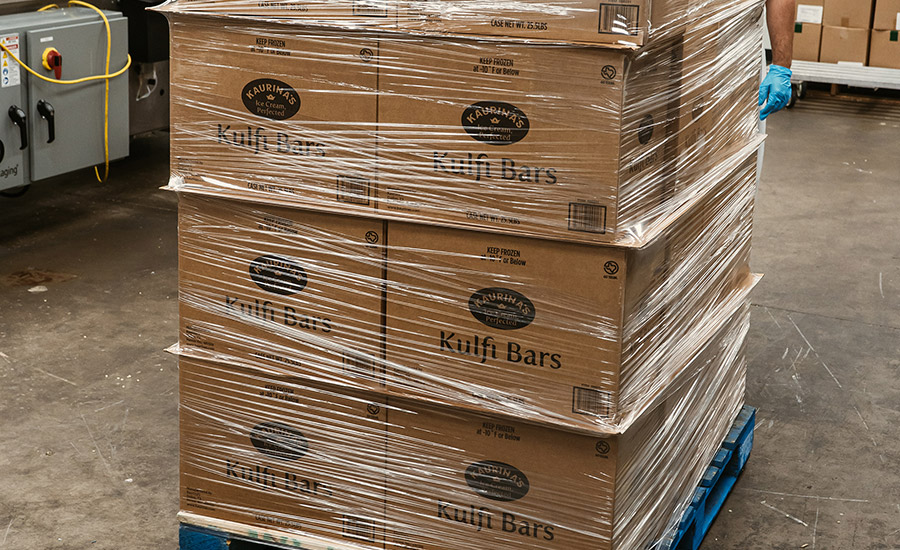
“We are not a value brand. We are making something unique, authentic, and artisan,” Aman Singh maintains. “But we do feel that $5.99 is an approachable price for most people. If you are looking for a guiltless indulgence, $5.99 is a fair price. It is definitely affordable.”
Singh adds Kaurina’s Kulfi also sells a club pack of 12 mini-pops, often at a $9.99 price point for the club store market. The variety flavor pack gives consumers the chance to try various kulfi varieties. The variety pack, consisting of Pistachio Almond, Mango, and Malai flavors, has been a top seller for the company.
Sustainability measures
Being a “boot-strapped” company, Aman Singh asserts Kaurina’s Kulfi has always been laser-focused on sustainability. “We are naturally in that mindset. We are always looking for more sustainable packaging. We do have recyclable cardboard that houses our pops,” he says. “But we are looking for cost-effective ways to offer our products in entirely recyclable materials. But that can cost a little more, and we do not want to pass on that cost to our customers.”
Kaurina’s continues to look at more sustainable materials as it scales up production of its products. Packaging is the main area where the Dallas company is making this effort, as it is difficult to enhance sustainability in other areas of the business, Aman Singh suggests.
“Packaging film is the only other thing we can look at. I have been trying to find a solution for that, but a quality product made from a sustainable material is difficult to source right now,” he notes.
Inventory management is also critical, Aman Singh states, assuring the company wastes very little in its manufacturing process.
Expansion plans
Kaurina’s Kulfi goes beyond retail outlets, with its products a hit at weddings and other events. Expansion beyond supermarkets to other retail locations, such as a convenience stores, could be a future avenue for growth.
“A small percentage of our sales comes from catering. We offer a plated service of kulfi and decorate it,” Aman Singh states. “We have made some inroads in foodservice. We are also dabbling in private label. If there are any brands looking to make a novelty, we are available.”
Kaurina’s also has plans beyond its namesake kulfi. The company will release an entirely different product, Paneer, an artisan handcrafted cheese. The five-ounce cheese offering will be available in Jalapeño and Garlic Chili flavors.
Looking for a reprint of this article?
From high-res PDFs to custom plaques, order your copy today!







